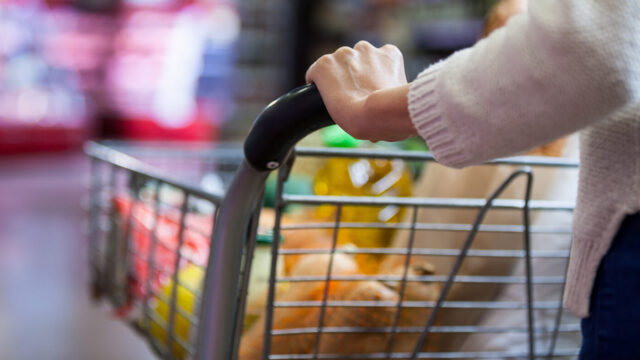What’s the best way to collect data on food a household acquires?
Implementing the FoodAPS-2 study

Challenge
To combat hunger, poor diet choices, and improve Americans’ health, policymakers need comprehensive data about the foods purchased or acquired by households for consumption at home and away from home, or through food and nutrition assistance programs. They also need data on food costs and quality, and whether providing respondents with the ability to electronically report their food acquisitions—as opposed to documenting this information in paper diaries—would increase response rates and data quality by lessening the response burden.
To find the answers, the Economic Research Service (ERS) of the U.S. Department of Agriculture (USDA) collaborated with Westat to conduct tests to determine if transitioning the Second National Household Food Acquisition and Purchase Survey (FoodAPS-2) to an electronic survey would increase response rates by reducing participants’ response burden.
Solution
The Pilot Test conducted in 2015, also called the Alternative Data Collection Method (ADCM) Pilot, involved recruiting households from 12 primary sampling units (PSUs). Included in our samples were recipients of the Supplemental Nutrition Assistance Program (SNAP) and the Special Supplemental Nutrition Program for Women, Infants, and Children (WIC). For the ADCM, in addition to programming the computer-assisted personal interviewing (CAPI) instruments for this test, Westat developed a web-based diary. Both were accessible to respondents as a smartphone application and through a browser on a computer or a smartphone by which respondents could keep food logs.
For the Field Test conducted in 2022, we developed a native smartphone application, known as FoodLogger. To prepare household members on how to use the app, we created a series of training videos that included guidance in how to log their food acquisitions from stops such as grocery stores, restaurants, and social gatherings, and to log other free and purchased foods obtained over the assigned data collection period. The app was designed to reduce the response burden and increase data quality. Using the gamification theory, household members earned incremental incentives on the completion of each interview and for each day they used the FoodLogger. With the exception of food acquisitions that were self-reported, all other interviews were conducted in person by our field interviewers.
The web-based diary developed for the Pilot Test and the app-based diary for the Field Test demonstrated Westat’s innovative and forward-thinking survey data collection methodology and computing technology.
Thea Palmer Zimmerman, Principal Research Associate
Results
Westat conducted comprehensive analyses of the data from the ADCM Pilot and Field Tests. The Pilot Test results showed that a web-based diary had great potential to improve data quality. Based on the Field Test results, we provided recommendations to create more user-friendly reporting modalities that were less burdensome to respondents. Over the 7-day collection periods, Westat gathered a wealth of dietary intake research of value to USDA.
In addition, our team offered suggestions on how to ensure FoodAPS-2 would produce the critical information needed to achieve USDA’s goal to help Americans consume healthy diets.
Focus Areas
Dietary Assessment and Healthier Outcomes Food and Nutrition Food Security and Expanding Access Social ServicesCapabilities
Advanced Technologies Communications Content and Product Development Data Harmonization and Data Linkage Data Integration, Harmonization, and Complex Analytics Data Visualization Statistical Methods Survey StatisticsSenior Expert Contact

Erika Bonilla
Principal Research Associate
-
Perspective
Workforce Development Drives Solutions to Rural Healthcare ShortagesDecember 2025
Rural communities face disproportionate shortages of healthcare professionals, resulting in diminished access to care, longer wait times, fewer available services, and, ultimately, poorer health outcomes.…
-
Expert Interview
Responsible Synthetic Data: Unlocking Insights While Safeguarding PrivacyDecember 2025
From electronic health records (EHRs) to federal statistics, synthetic data are rapidly transforming how organizations share and analyze information, offering new ways to unlock insights…
-
Expert Interview
Moving AHEAD by Overcoming Potential Challenges to Healthcare TransformationNovember 2025
Healthcare access and costs in the U.S. continue to move in opposite directions—access is declining while costs keep rising. Americans need innovative solutions that tackle…